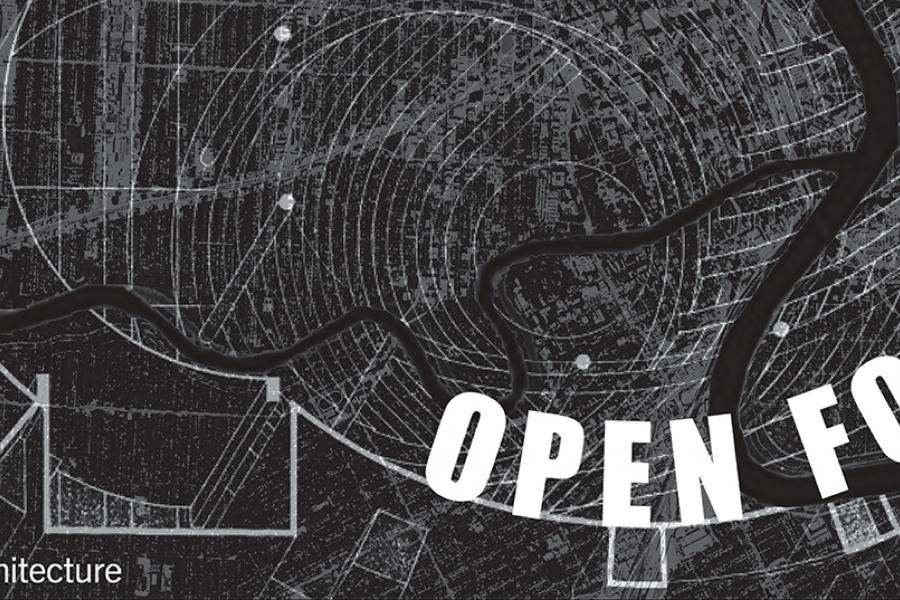PhD Design and Planning Seminar

The Faculty of Architecture’s PhD in Design and Planning program fosters advanced trans-disciplinary research in design and planning fields. Join this open seminar and discussion to learn more about the research currently underway by four doctoral students.
Each 15-minute presentation will be followed by 15-minutes of open questions and discussion.
10:00 Jeffrey Thorsteinson
10:30 Honoure Black
11:00 Mojtaba (Moin) Hassanzadeh
11:30 Justin Loma
Moderator: Dr. Lisa Landrum, Associate Dean Research and PhD Program Chair
Research summaries
Jeffrey Thorsteinson
Calming Nerves, Curbing Distraction: Architecture and Urban Design as Affective Form in Canada, 1910-1960
Advisor: Dr. Lisa Landrum
Walter Gropius described the ambition of his 1927 “Totaltheater” to be the creation of a building “capable of transforming and refreshing the mind by its spatial impact alone … [for] structure can transform the mind.” That Bauhäusler such as Gropius were interested in the psychologically-affective nature of colour and form is somewhat well known. Precisely how Bauhäusler and other Modernist architects incorporated a psychologically-determinative view of environment into architecture is under explored. My research centres on the trajectory of affective form in European and North American discourses on the built environment and their ultimate intersection in Canadian design practices of 1910-1960. In so doing particular attention is given to architecture’s relationship to advertising and its possible role in fostering self-directed attention and mental “equipoise.”
Jeffrey Thorsteinson is a graduate of the University of Manitoba and Queen's University, currently working with Parks Canada as a historian and preparing for his Ph.D. Candidacy Exam. He authored the book Brutalist Architecture in Winnipeg in 2013 and co-authored the book Green Blankstein Russell and Associates: An Architectural Legacy (2017, with Brennan Smith).
Honoure Black
Sites of Insurgency: Public Art in Winnipeg, Manitoba
Advisor: Dr. Karen Wilson Baptist
Public art has the potential to engage communities, memorialize the past and promote reconciliation for the future. As a visual tool, it can connect material culture, the built environment and the landscape through storytelling and social practice. Contemporarily with the Truth and Reconciliation Commission of Canada’s Ninety-Four Calls to Action, the resurgence of Black Lives Matter and other BIPOC initiatives, public art can be used to unsettle, decolonize and create sites of resistance. Through an intersectional feminist lens, I will investigate specific-sites of contemporary public art in Winnipeg as powerful markers, which (re)claim, (re)placemake and (re)map the urban fabric, by creating sites of insurgency in place.
Honoure Black is a currently a PhD Candidate and Instructor for the Faculty of Architecture on a one-year term. In prior years she has been a sessional instructor split between the School of Art and the Faculty of Architecture, teaching courses both graduate and undergraduate on art, architecture and design history, theory (art history and landscape architecture) and research methods.
Mojtaba Hassanzadeh
Collage: A Tool to Intensify Creativity in the Landscape Design Process
Advisor: Dr. Marcella Eaton
This inquiry argues for the intensification of spatial thinking through the juxtaposition of image fragments in collage. Spatial perception happens in intervals of time and space, manifesting different guises and nuances, partaking in the human appreciation of landscape atmospheres. Collage can expose the perception process as part of the design process. The research examines collage as a medium that could intensify the exchanges between the known and unknown design matter and spatial substances in the landscape design process. Moreover, it argues that an amplified exposure to design-subjects in their contexts could lead to intensified representations of design questions, generating creative questions, contributing to more innovative approaches, methods, and strategies.
Mojtaba (Moin) Hassanzadeh was born in Tehran, Iran, but grew up in Leuven, Belgium. He has a Bachelor's degree in Architectural Engineering and a Master's degree in Landscape Architecture. Moin is passionate about landscape representation through hand drawings and collage as a method to trigger hidden talents. Moin is a Ph.D. Candidate in his third year of study. Having successfully finished his Candidacy Exam in March 2020, just a few days before COVID-19 closed the school, he is currently preparing his Thesis Proposal.
Justin Loma
Examining How Indigenous Peoples Define Indigenous Spaces: A Comparative Study of Communities in Canada and South Sudan
Advisor: Dr. Sarah Cooper
The proposed research examines and compares how Indigenous peoples in a settler nation (Canada) and a former multi-nation colony (South Sudan) define Indigenous spaces. My objectives are to determine what Indigenous peoples consider as Indigenous spaces, highlight the meanings that Indigenous peoples ascribe to Indigenous spaces, explore how Indigenous peoples participate in creating Indigenous spaces and describe the barriers Indigenous peoples face maintaining Indigenous spaces. The research will use semi-structured interviews and Indigenous sharing circles to collect data from 30 participants in Winnipeg, Canada, and Yei, South Sudan. The approach is informed by community-based research and Indigenous research principles, underpinned by James Roberts’s theory of Liminal Spaces.
Justin Loma was born and raised in Yei, South Sudan. Before admission to the Ph.D. Program in Design and Planning, he completed a Master's in Urban and Regional Planning at California State Polytechnic University and a Bachelor's n Human Ecology/Architecture at College of the Atlantic in Bar Harbour, Maine. Justin is a second-year Ph.D. student preparing for his Candidacy Exam.
